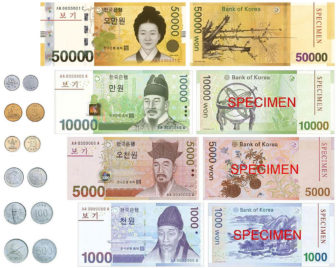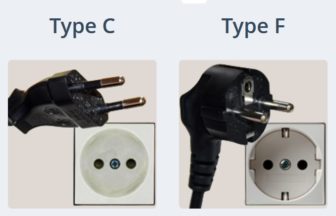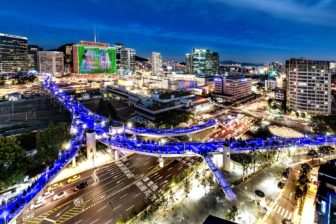1. What is the Uncovering Asia 2018 conference?
Uncovering Asia 2018 is the third major investigative journalism conference to be held in Asia. It is a skills-based training conference designed to strengthen the capacity and networks of investigative reporters, data journalists, and others engaged in watchdog, accountability journalism. The conference is hosted by the Global Investigative Journalism Network, the Korea Center for Investigative Journalism (Newstapa), and the Konrad-Adenauer-Stiftung.
The groundbreaking first Uncovering Asia Conference was held in Manila on November 22-24, 2014, and attracted 300 people from 30 countries. The second Uncovering Asia Conference was held in Kathmandu, Nepal on September 23-25, 2016, and attracted 375 people from around the world.
2. Who will the speakers be and what can we expect for the program?
Uncovering Asia will host speakers from more than 30 countries, including many of the world’s top trainers in investigative and data journalism.
3. Where’s the conference?
The conference venue is the four-star Millennium Seoul Hilton in Seoul, Korea. It is located in downtown Seoul, 2.4 km from the city’s business district, cultural hotspots and shopping centers.
The hotel offers four restaurants, a fitness center, golf driving range, indoor swimming pool and a spa complex. Just across the street visitors will find a convenience store and an array of restaurants offering less expensive cuisine, including hamburgers and Korean favorites like bi bim bap and bulgoki.
4. How can I register?
Online registration can be found here and will be open until September 30, 2018. After that, you can register at the conference venue on Thursday, October 4 or Friday, October 5, 2018. Early bird (discounted) tickets for US$275 (KRW 300,000) will be available until July 31. After that, registration will cost US$325 (KRW 350,000).
There will be a registration desk all day Thursday, October 4, and Friday, October 5 at the conference venue, the Millennium Seoul Hotel — look for the IJAsia18 banner. You can pay the registration fee by credit card or cash. Registration includes lunches, the Thursday reception, Saturday banquet, and access to all sessions.
5. How can I pay the conference fee?
All attendees should pay through the registration site. You’ll have the option to pay with one of four credit cards (Mastercard, Visa, AMEX, or Discover). You can also pay at the venue on October 4 and 5, with either cash or a credit card.
6. Is there financial assistance for journalists to attend?
GIJN and its partners are giving out 75 fellowships for journalists from developing countries to attend. The deadline to apply is June 1, 2018. All successful applicants will be contacted by July 15. To stay informed about opportunities for future events, subscribe to the GIJN newsletter.
7. Where can I find the cheapest flights to Seoul?
The cheapest tickets to Seoul can be found through sites such as Skyscanner, Momondo, Kayak, Expedia, or Hotwire. Be sure to check if you need a visa or a transit visa if transferring through other countries!
8. What about transportation from the airport and in the city?
1) From Seoul-Incheon International Airport
We strongly recommend taking the airport limousine bus service, which costs only about US$15 and takes you directly to the hotel in an hour. The bus departs from Exit 3B at Terminal 1, and Exit 18 at Terminal 2.
You can take the train from the airport to Seoul Station, which also takes about an hour, but we don’t recommend it unless you know the way. The hotel is about a 12 minute walk, but the Seoul Station exits are not well marked and GPS doesn’t always work well. The hotel has a free hourly shuttle service to and from the Seoul Station (although we couldn’t find it).
A car rental or cab may cost up to KRW 150,000.
2) From Gimpo International Airport
The airport railroad costs about KRW 1,450 and takes about 22 minutes to Seoul Station, where the hotel shuttle bus can pick you up. It costs about KRW 50,000 by taxi.
9. Where should I stay?
Check out our Hotel section.
10. Do I need a visa to enter Seoul?
Most foreign nationals visiting Korea are required to have a visa issued by the Korean embassy or consular offices in their country. An online visa application is available at the Korea Visa Portal.
Citizens from a few dozen countries and territories do not need visas for visits of 30 to 90 days, including Japan, Hong Kong, Macao, Taiwan, Australia, Canada and the United States.
11. What is the dress code for the conference?
Business casual. Men — no ties are needed.
12. How can I become a conference sponsor?
Interested in helping sponsor the conference? Media organizations within Korea sending at least ten people or contributing US$5,000 or more can become a conference co-sponsor. For media organizations outside Korea, send at least five people or contribute US$5,000 or more. For sponsorship opportunities, contact us at secretariat@gijn.org.
13. What else do I need to know?
Currency
 The currency in South Korea is the Korean Won (KRW). The exchange rate is subject to market fluctuation, but usually 1US$ is approximately KRW 1,000. Banknotes come in denominations of 1,000, 5,000, 10,000, and 50,000. While most places accept credit card payments, it is a good idea to keep a stash of small denomination notes.
The currency in South Korea is the Korean Won (KRW). The exchange rate is subject to market fluctuation, but usually 1US$ is approximately KRW 1,000. Banknotes come in denominations of 1,000, 5,000, 10,000, and 50,000. While most places accept credit card payments, it is a good idea to keep a stash of small denomination notes.
Alert on ATMs: Although ATMs are widespread in Seoul, many foreign visitors report trouble using their cards in Korean machines. Be sure to bring back-up cash or traveler’s checks that you can use at the currency exchange booths at the airports, banks and elsewhere.
Make sure to bring valid ID since some banks will ask for ID when making transactions. Both Incheon International Airport and Gimpo International Airport provide foreign currency exchange services. If you missed the chance to exchange currency at the airport, there are also many places to exchange money near the Conference venue in Seoul Station and Myeongdong.
Language
The official language spoken in South Korea is Korean. The writing system known as ‘Hangul’ was invented from scratch for the Korean language by King Sejong in 1446. Many people may also understand basic English in Seoul.
Electricity
 In South Korea the standard voltage is 220V and the frequency is 60Hz. If the standard voltage in your country is between 100V – 127V (as in the US, Canada and most South American countries) you need a voltage converter in South Korea. Power sockets are of type C (also known as the standard “Euro” plug) and F (also known as “Schuko”).
In South Korea the standard voltage is 220V and the frequency is 60Hz. If the standard voltage in your country is between 100V – 127V (as in the US, Canada and most South American countries) you need a voltage converter in South Korea. Power sockets are of type C (also known as the standard “Euro” plug) and F (also known as “Schuko”).
Mobile
Most areas in South Korea support 4G LTE and 3G. South Korea has 3 major mobile network operators:
- SK Telecom
- KT Olleh (by Korea Telecom)
- LG U+
Prepaid SIM cards are available in Incheon Airport or major convenience stores. You may also use the portable Wifi router (Egg) rental service upon your arrival at the airport.
HOTLINES AND IMPORTANT NUMBERS:
Country code: 82
Seoul city code: 02
Police: 112
Emergency ambulance/Fire Department: 119
Korea Travel Hotline (free interpretation service): 1330
Weather & What to Wear
Early October is one of the best times to visit Seoul. With the beautiful autumn skies and comfortable breeze, most days are sunny with mild temperature between 7°C/45°F and 18°C/64°F. You may need long-sleeve shirts during the day and lightweight jackets for chilly evenings.
Health
There are no special vaccination requirements for visiting Korea. However, air pollution is common in Seoul throughout the year. Residents and visitors, especially those with respiratory problems are advised to stay indoors or use masks when the concentration levels of dust particles are high.
Most pharmacies stock some Western medicine, and emergency medicine such as tylenol are available in convenience stores. If you have a language problem in describing the medicine you want, dial 1330 (Korea Travel Hotline – free interpretation service) and explain what you want and ask the interpreter to explain in Korean.
Tourist Destinations
Official maps and guidebooks for tourists provided by Seoul city are available for free. Download them online at visitseoul.net. Guidebooks on specific topics such as Muslim dining, medical tourism, what and where to eat are also included.
Places to Explore in Seoul
Seoullo 7017

(©Photographer (John Doe)-Korea Tourism Organization)
Only 200 meters from the conference venue, Seoullo 7017 is an urban park that was once used as an overpass constructed in the 1970s. Instead of tearing the abandoned overpass down, Seoul decided to use the infrastructure to make a more pedestrian-friendly city. Filled with more than 24,000 plants, Seoullo 7017 is open 24 hours and is lined with sellers, flower shops, exhibitions and food markets.
Myeongdong
Myeongdong is Korea’s best-known shopping district. You’ll find cosmetics, clothes, shoes, accessories as well as street food.
Namsan Seoul Tower
Standing at 236.7 meters tall, Namsan Seoul Tower was built as Korea’s first radio tower and combined with an observatory. It has been a symbol of Seoul and a popular tourist attraction for the last 40 years. The observatory has a revolving restaurant that shows a stunning nightscape of Seoul.
- Observatory entry fee: Adults KRW 10,000, Children KRW 8,000
- Business hours: 10:00-23:00 (Saturday 10:00-24:00), Restaurants 11:00-23:00
